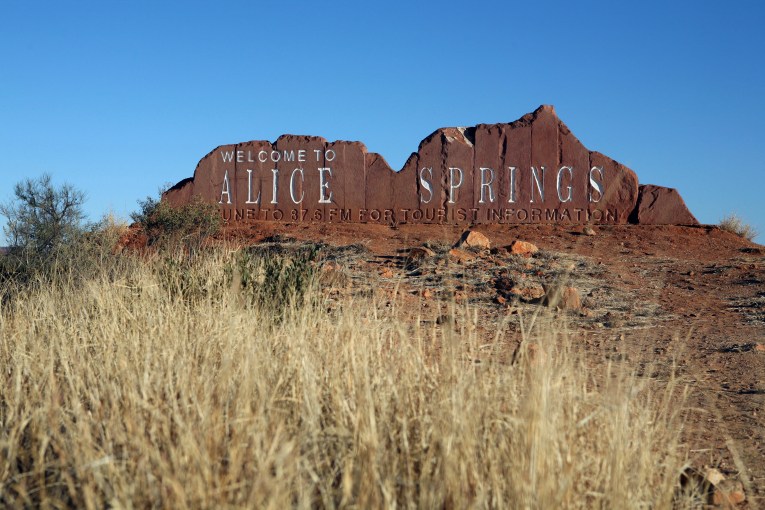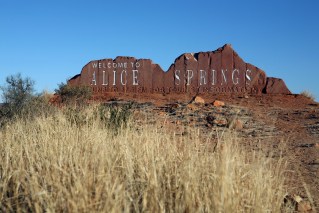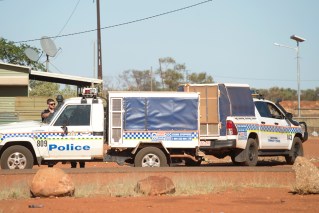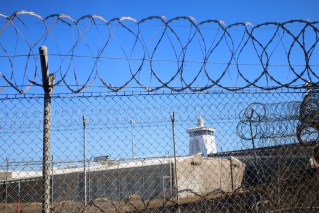Hundreds of climbers begin Uluru ascent after three-hour wind delay

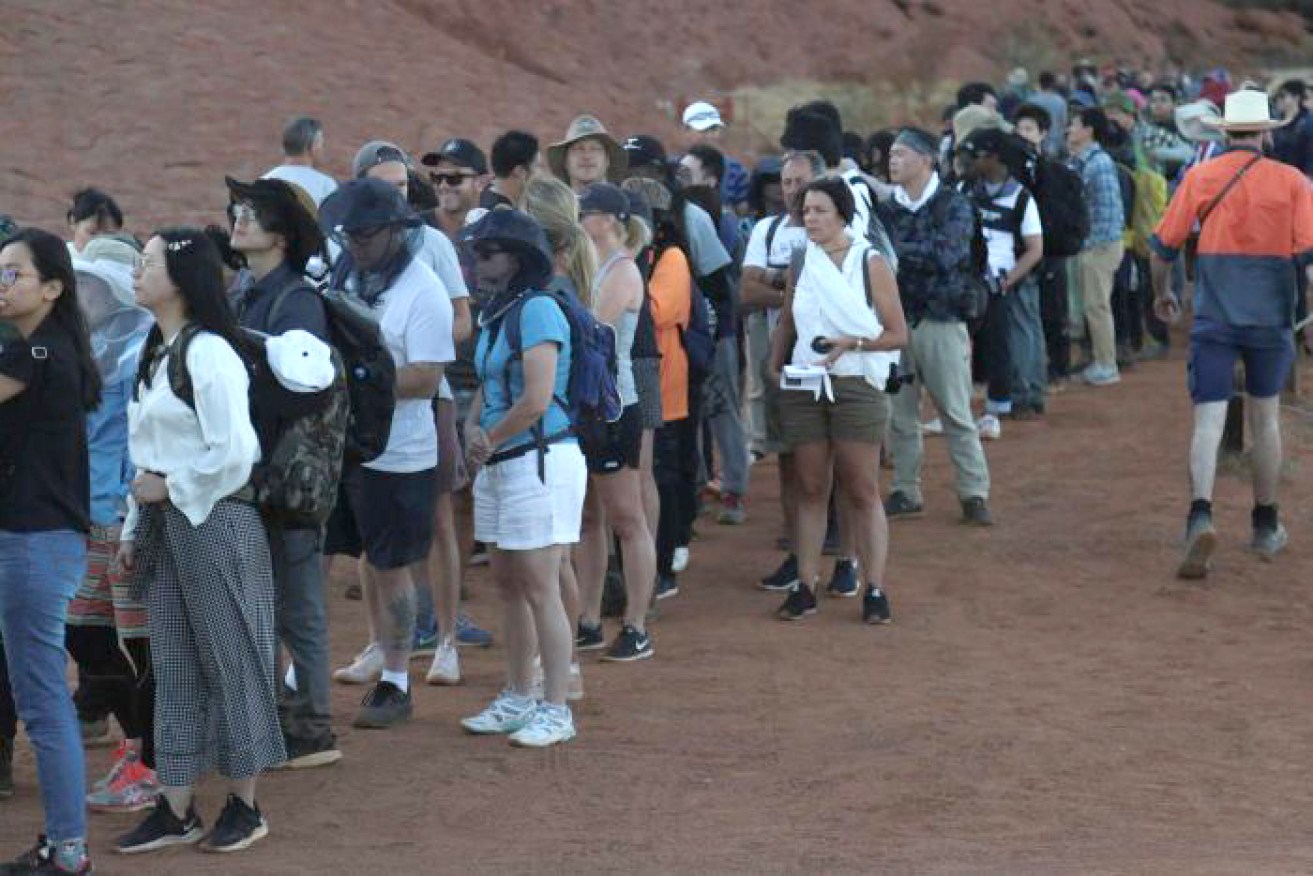
The gathered crowd at the base of Uluru early on Friday morning. Video: ABC Photo: ABC
There were chaotic scenes at Uluru on Friday as hundreds of tourists queued to climb the rock on the final day before a permanent ban – only to be delayed by high winds.
Tourists started lining up from 4am on Friday (5.30am ADST) to climb the 348-metre high landmark 470km from Alice Springs, and by lunch time almost 100 so-called “climb-fever” visitors had made the ascent, with hundreds more waiting patiently in sun hats and holding drink bottles.
But at 7am, when the rock climb usually opens, rangers put up a sign declaring it was closed due to high winds.
This was in line with regulations requiring the climb to be closed when strong heat, wind or rain occurs, following numerous deaths at the rock in the past. In all, at least 37 people have died while making the ascent.
The wind threshold is 25 to 30km/h.
On Wednesday, local media reported “scorching weather” would also force the closure if temperatures exceeded 36 degrees.
On Friday afternoon, the bureau of meteorology recorded a steady temperature of 31.3 degrees.
Uluru Kata Tjuta National Park operators did not open the climb to the public until three hours later, prompting a scramble from the waiting public.
As local traditional owner Vincent Forrester reportedly booed at the crowd, visitors and tourists began hustling towards the rock face to make the climb.
The climb at Uluru has been opened for the final time @10NewsFirst pic.twitter.com/BA1PWzZZo4
— Brett Clappis (@BrettClappis) October 25, 2019
National park operations manager Stephen Baldwin said the weather would continue to be assessed throughout the day.
The climb will close permanently to the public at 4pm (local time) on Friday.
At the front of the queue on Friday were Adelaide couple Joseph and Sonita Vinecombe, who flew into the area on Thursday specifically to make the climb.
“We were hoping to get here and there would be no one around, but the rangers beat us, unfortunately,” Mr Vinecombe said.
“We thought maybe we would try to sneak up and back before anyone knew we’d done it.’
Mr Vinecombe said they were aware of the cultural sensitivities around the climb.
“I think it holds you back but whether it stops you doing it?”
“You want to be respectful, and I do respect the issues regarding it. There’s thousands of people doing it and it is a conundrum,” he said.
https://twitter.com/Hocking_Rachael/status/1187505398472855552
Behind them were the Derks family, including mother Kelly and her daughters Madison and Georgia, from Victoria.
Madison, 19, was climbing for the second day in a row.
“It was good to climb it, you feel really proud, and you’ve got to do it while you’ve got the chance,” she said.
A mild 33-degree forecast for the area on Friday means the heat will not be an issue for climbers.
The rush to beat the ban on climbing the rock from Saturday – or crazy “climb fever” as the Uluru Kata Tjuta National Park ranger in charge Greg Elliot calls it – has shown no signs of abating.
On Friday, after the last of climbers comes down, workers will immediately start removing all evidence climbing was ever allowed on the red sandstone rock.
The chain handhold built in 1964, and later extended, enabling visitors to get up and down the sheer western face will also be removed.
The National Park board decided in 2017 to ban the climb from this Saturday, which marks 35 years since the land title to the Anangu was given back on October 26, 1985.
Uluru is a sacred site and of great spiritual significance to local Aboriginal groups, including the Pitjantjatjara Anangu traditional owners.
The Anangu people will celebrate with a ceremony at the rock on Sunday.
Uluru custodian Leroy Lester said there were several reasons the Anangu wanted the climb closed.
“Mainly because it’s a sacred site and mainly because for safety reasons, pollution on top, no toilets up there and E. coli killing all the organisms, all the frogs and everything,” he told the ABC.
“And it’s very, very dangerous.”
Mr Lester said the large number of people travelling to climb the rock, defying traditional owners’ objections, represented a clash of cultures in Australia.
“A different culture, conquer and divide, you can’t blame them. It’s in their genes, that Anglo-Saxon way,” he said.

Custodian Leroy Lester says he does not blame people for wanting to climb. Photo: ABC
The scarring from millions of pairs of feet scrambling up the rock for decades will take a long time to erode, possibly hundreds of years.
Aboriginal people have been in Australia for tens of thousands of years, so the brief time tourists have climbed Uluru is tiny, Mutitjulu resident and Central Land Council chair Sammy Wilson said.
“It is just a blip in the middle, this whole climb thing, it is going back to normal by banning the climb.”
Indigenous Affairs Minister Ken Wyatt told the ABC he had been disappointed by the large numbers of people rushing to climb Uluru in recent weeks.
“It would be equivalent to having a rush of people wanting to climb over the Australian War Memorial,” he told the ABC.
“Our sacred objects, community by community, are absolutely important in the story and the history of that nation of people.”
https://twitter.com/marcialangton/status/1187222336736382976
Mr Wyatt said people who have climbed Uluru in the past should reflect on how they’ve disrespected traditional owners.
“I wouldn’t want to curse anybody nor leave them with negative elements of life,” he said.
“But reflect back what you’ve done and reflect back on the fact you’ve disrespected a community of traditional owners who have always wanted the right to have a say about what is sacred to them.”
-with AAP
